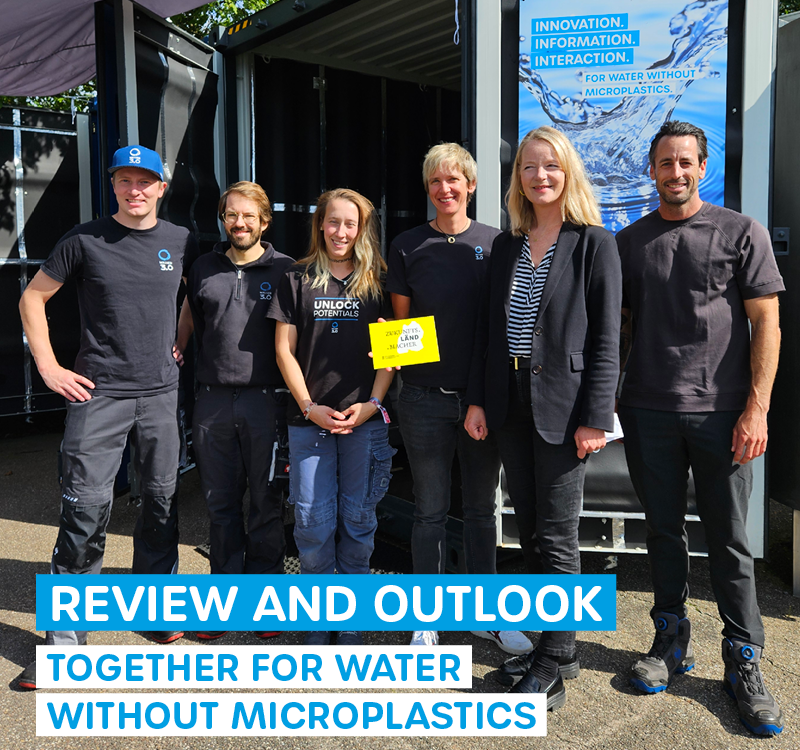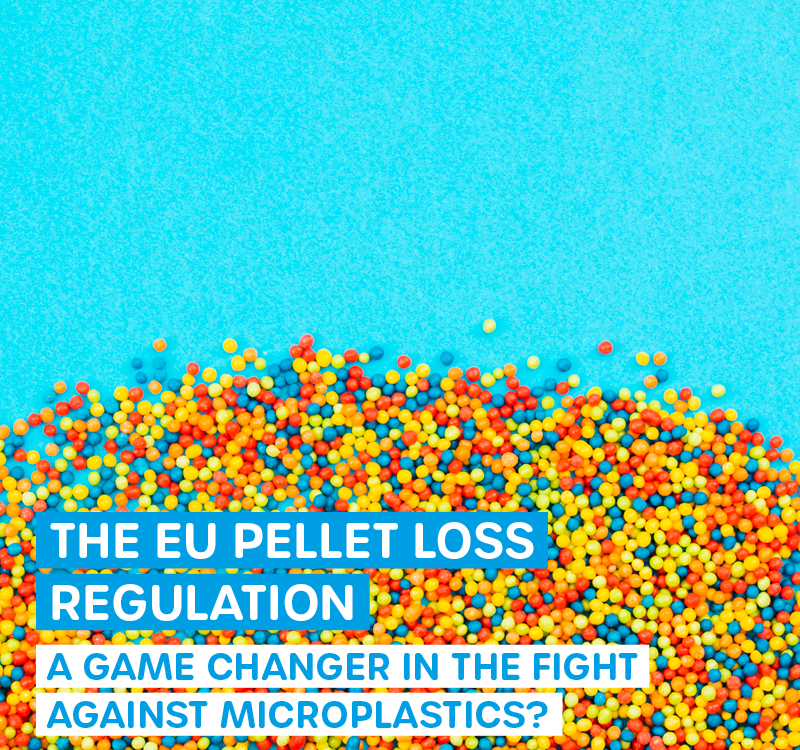
Microplastics regulation
10. July 2025
That was the OPEN HOUSE 2025
16. July 2025Microplastic regulations: Why policymakers are still stuck in a traffic jam
The European Union has set itself ambitious targets: 30% reduction in microplastic release by 2030 according to the Zero Pollution Action Plan of 2021. But three years later, a sobering reality is emerging. There is a huge gap between ambition and reality. Policymakers still do not have the tools in their hands to even come close to achieving these goals. The question is no longer whether we have a microplastics problem, but why our regulatory approaches remain so fragmented and incomplete.
The regulatory mosaic: patchwork instead of a system
REACH regulation: the first but incomplete step
EU Regulation 2023/2055, which restricts synthetic polymer microparticles in products, has been in force since October 2023. This sounds like a breakthrough, but it is only the tip of the iceberg. This regulation only covers intentionally added microplastic particles - a fraction of the actual problem.
What is missing? Comprehensive regulation of unintentional or uncontrolled microplastic releases, which account for the majority of environmental pollution. Industrial and municipal wastewater, textiles, tires, packaging - all sources that remain virtually unregulated.
Marine Strategy Framework Directive: The toothless tiger
The Marine Strategy Framework Directive, or MSFD for short, from 2008 was the first directive worldwide to address microplastics in the marine environment. Almost 17 years later, the "Good Environmental Status" for European seas has still not been achieved. Why? Because monitoring is not the same as regulation. The MSFD defines targets but does not provide any binding mechanisms for reducing emissions.
Zero Pollution Action Plan: Ambition without bite
The Zero Pollution Action Plan of 2021 states a 30% reduction by 2030. However, on closer inspection, this turns out to be a target without a concrete implementation strategy. How is a 30% reduction to be achieved if the main sources - industrial processes and municipal wastewater - are still barely regulated?
The delaying tactics: who is slowing down and why?
- Industry: master of strategic slowness
The chemical and plastic industries have perfected what is known as "regulatory capture". Through intensive lobbying, standards are watered down, transition periods are extended, and definitions are so narrow that major sources of emissions are left out. Even in the definition of particle size, there were controversial discussions between 1 nm and 100 nm - valuable time that was lost.
- The member states: National egoism instead of European solutions
While Germany and the Netherlands are pursuing progressive approaches, other member states with strong chemical industries are blocking ambitious regulations. The result: the lowest common denominator becomes the norm.
- The Commission: caught between ambition and feasibility
The European Commission is navigating between scientific findings and political realities. The result is compromising solutions that are scientifically inadequate and difficult to implement in practice.
What policymakers really need
- Holistic regulations instead of individual measures
Effective microplastic regulations must cover all sources:
- Extended Producer Responsibility for all plastic-producing industries
- Mandatory reduction targets for unintentional emissions
- Mandatory Life Cycle Assessment for new plastic products
- Uniform monitoring and measurement standards
Despite the MSFD, there are still "few recognized approaches for monitoring". Without standardized measurement methods, regulations cannot be enforced.
We need:
- EU-wide monitoring protocols
- Harmonized analysis methods
- Regular, mandatory emission measurements
- Economic incentives instead of just bans
Pure bans fall short. Effective policy creates economic incentives:
- Plastic waste levies based on the polluter pays principle
- Increase in wastewater charges if microplastic pollution is too high
- Increase in waste fees if the circular economy is not implemented and cross-process life cycle assessments are not carried out
- Innovation funding instead of research funding for alternatives
- Tax concessions for plastic-free innovations, such as microplastic-free production
- International coordination
Microplastics do not stop at borders. The EU must promote international standards instead of regulating on its own at national level.
The way forward: Courage for radical reform
Immediate measures (2025-2026)
The new legislative period should urgently set a decisive course, including
- Revision of the REACH regulation to include unintentional emissions
- Tightening of the Single-Use Plastics Directive to include further product categories
- Binding reduction targets for all member states
Medium-term transformation (2027-2030)
- Circular Economy Package 2.0 with specific microplastic targets
- EU-wide deposit system for plastic packaging
- Mandatory corporate reporting on microplastic emissions
Long-term vision (2030+)
Approaches are already being developed to remove microplastics from wastewater, but this is not enough. We need a fundamental transformation:
- Near-zero emission standards for all plastic applications
- Complete substitution of critical applications
- Global regulatory standards under EU leadership
Conclusion: time for political courage
Current microplastic regulations resemble a patchwork of well-intentioned but incomplete measures. While science has long provided clear evidence of the dangers of microplastics, policymakers are hiding behind technical definition debates and industry-friendly transition periods.
The 30% reduction target by 2030 will not be achieved with the current measures. This will require political courage for systemic reforms that go beyond cosmetic corrections. The question is no longer whether we need to act, but whether we have the courage to resist the industry lobby and make evidence-based policy.
The time for half-hearted compromises is over. Microplastics in our oceans, our drinking water and our bodies are not waiting for the next regulatory cycle.






